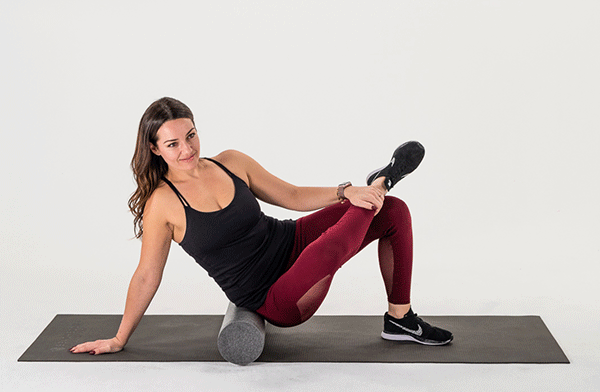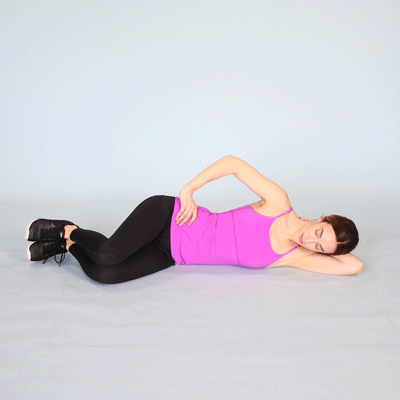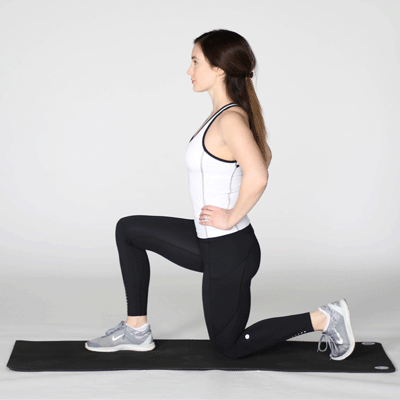The Top 5 IT Band Stretches And Exercises For Alleviating Outer Knee Pain
Outer knee pain can be a persistent and debilitating issue, often caused by tightness and tension in the iliotibial band (also known as IT band or ITB). When the IT band becomes tight or inflamed, it can lead to symptoms that disrupt the ability to move freely and can limit enjoyment of life. Fortunately, there is a range of highly effective IT band stretches and exercises that are designed to alleviate discomfort and help patients regain movement.
Whether you're an athlete seeking to prevent injury or looking for pain relief from a knee injury, physiotherapy is invaluable in the road to recovery. From assessment and diagnosis to personalized rehabilitation plans, physiotherapists use their expertise to optimize recovery from knee pain and enhance overall well-being for patients.
Understanding Outer Knee Pain
The IT band is a thick band of connective tissue that runs along the outer side of the thigh, from the hip to the shinbone. Over time the ITB can become tight, inflamed, and painful. This discomfort can lead to issues with walking or bending and straightening the knee. If the pain is persistent or severe, a doctor or physiotherapist may diagnose this as ITB syndrome, requiring rehabilitation.
A physiotherapist will be involved in the rehabilitation to prescribe various treatments and movements to alleviate the symptoms. Common treatments for IT band syndrome include stretches, exercise, massage, dry needling, and more.
The Best IT Band Stretches And Exercises To Alleviate Outer Knee Pain
There is a series of beneficial exercises and stretches for the IT band that a physiotherapist may prescribe for outer knee pain. These include:
1. IT Band Stretch
The IT band stretch is a fundamental exercise that directly targets the tightness in the iliotibial band, helping to release tension and alleviate knee pain.
How To Perform IT Band Stretch:
Stand upright with your feet hip-width apart.
Cross your right leg over your left leg.
Extend your right arm overhead and reach towards your left side.
Keep your left arm extended out to the side for balance.
You should feel a stretch along the outer side of your right thigh and hip.
Repeat on the other side by crossing your left leg over your right and reaching your left arm overhead.
The physiotherapist will likely suggest this exercise for those needing to gradually increase flexibility in the IT band in order to reduce knee pain.
2. Foam Rolling
Foam rolling is an excellent self-massage technique that can help release tension and tightness in the IT band. For those with knee pain, IT band stretches with a foam roller may become an essential part of a physiotherapy treatment routine.
How To Perform The Exercise:
Lie on your side with the foam roller positioned under your hip.
Support your upper body with your forearm and place your opposite foot on the ground in front of you.
Slowly roll your body forward and backward along the length of your IT band.
Pay close attention to any tender or tight spot.
Start slowly and gradually increase the time.
Foam rolling helps break up fascial adhesions and increases blood flow to the IT band, promoting healing and reducing pain. As we get older, this exercise may become more difficult. A physiotherapist may prescribe a regression of these IT band stretches for seniors, such as sitting in a chair and pressing a tennis ball along the length of the ITB instead.
3. Clamshell Exercise
The clamshell exercise is an effective way to strengthen the muscles surrounding the hip and provide stability to the IT band, which can ultimately alleviate knee pain. Technique is important for the best results, so the physiotherapist will likely guide the exercise to correct any form issues.
How To Perform A Clamshell:
Lie on your side with your legs bent at a 90-degree angle, heels together, and feet in line with your spine.
Keep your feet touching and lift your top knee as high as you can without moving your pelvis or lower back.
Lower your knee back down slowly.
The physiotherapist will direct on the number of sets and repetitions for best results.
By strengthening the hip abductors, particularly the gluteus medius, the clamshell exercise helps reduce stress on the IT band during movement, preventing it from becoming overly tight and painful.
4. Standing Hip Abductor Exercise
This standing exercise targets the hip abductor muscles, including the gluteus medius, which play a crucial role in stabilizing the pelvis and reducing IT band tightness.
How To Perform Standing Hip Abduction:
Stand upright with your feet hip-width apart and hold onto a chair or wall for support.
Lift your right leg out to the side as high as you can while maintaining a straight posture.
Slowly lower your leg back down.
Repeat on the other side.
By strengthening the hip abductors, this exercise can help balance the forces acting on the IT band, reducing the likelihood of it becoming irritated and painful. This may be incorporated in other forms of exercise, such as pilates or yoga. For example, similar IT band stretches and exercises in yoga may include “Tree Pose” or “Warrior Three”.
5. Hip Flexor Stretch
Tight hip flexor muscles can contribute to IT band tightness and knee pain. Stretching the hip flexors can help relieve this tension and improve overall hip mobility.
How To Perform The Exercise:
Kneel on the ground and step your right leg forward, bending your knee at a 90-degree angle.
Keep your left knee on the ground and shift your weight forward slightly.
Tuck your pelvis under and engage your glutes to feel a stretch in the front of your left hip.
Repeat on the other side by stepping your left foot forward.
Regularly incorporating hip flexor stretches can help reduce tension in the IT band, alleviating knee pain.
The Importance Of Physiotherapy In Knee Pain
Physiotherapy is an integral component of the comprehensive care and management of knee injuries. Its significance extends far beyond mere symptom relief and gets to the root causes of knee problems. A skilled physiotherapist identifies and diagnoses the precise nature and severity of the injury through a thorough assessment. They can pinpoint the weak muscles, biomechanical imbalances, or flexibility issues that may be contributing to knee discomfort.
Physiotherapists will take this assessment and tailor the treatment plan to each patient. These personalized rehabilitation programs incorporate a range of exercises, stretches, and manual therapy techniques designed to improve muscle strength, joint stability, and flexibility. Through targeted interventions, they address muscle imbalances, gradually strengthening the surrounding musculature, which not only aids in recovery but also prevents future injuries. Physiotherapy empowers individuals to take an active role in their recovery, promoting self-care and education about proper biomechanics and movement patterns.
Manage ITB Pain With Support From Physiotherapy
Dealing with outer knee pain caused by IT band tightness can be frustrating, but with the right IT band stretches and exercises for knee pain relief is within reach. The ultimate goal is not merely to alleviate knee pain temporarily but to restore function, mobility, and long-term knee health. Consult a physiotherapist for the best results.











